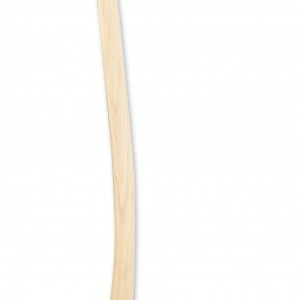

You can choose to purchase an adze pre-fitted with a handle, or you can purchase the head, and handle it yourself. The modern adze head is typically made from steel, and fitted with a strong wooden handle designed to absorb shock. It’s also used by some specialist craftspeople such as coopers. Its noble, historical charm makes it popular amongst Revivalists, such as those in Colonial Williamsburg (USA), and amongst the Canadian Indian and Northwest Coast American sculptor communities. The adze does still exist as a stand-alone tool, however, and gets some good use in certain cultures and trades. The halligan bar (used by fire fighters) also has a dull adze on one end for demolition and forced entry. The head of an ice axe, for example, often features an adze for chopping steps into the ice. In fact, the adze is frequently incorporated as a feature of more well-known tools. This is largely down to it being replaced, at least in industrial cultures, by more modern tools such as the power-plane and the sawmill.īut that’s not to say it’s died out completely. Well, unfortunately, the popularity of the adze hasn’t survived quite as well as some of the early adzes that we’ve unearthed as artefacts. Depictions of the adze have even been found in Ancient Egyptian Art, from the Old Kingdom onward. Examples of the adze dating back to the Stone Age have been discovered across Europe, and there’s evidence of it having also been used by the Maori tribes of Australia and the native people of the Northwest American coast. The history of the adze is long and geographically far-reaching it’s actually one of the earliest-dated tools in archaeological record. It can be used for hollowing curves, or for shaping and smoothing flat pieces. Different types of adze are have been specifically designed with certain tasks in mind, but generally speaking, the purpose of the adze is to shave slithers from the wood’s surface, rather than chopping out sections. The adze is a versatile tool, with numerous variations of different weights, sizes, and blade shape. The head of the adze, however, is attached at a right angle to the handle, like that of a hoe. With its broad and rectangular head, its appearance is largely axe-like. The adze (also spelt adz) is a wood cutting tool dating back to the Stone Age.


#Carpenters adze how to#
How To Make Woodworking Projects Profitable.6 Beginner Wood Carving Ideas With Dremel, Art and Projects.


 0 kommentar(er)
0 kommentar(er)
